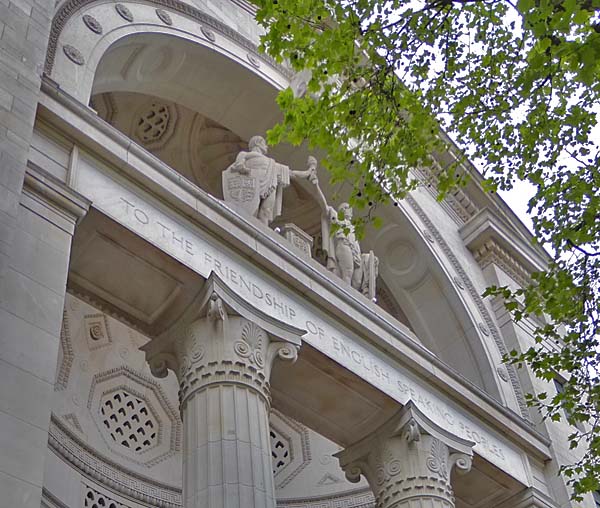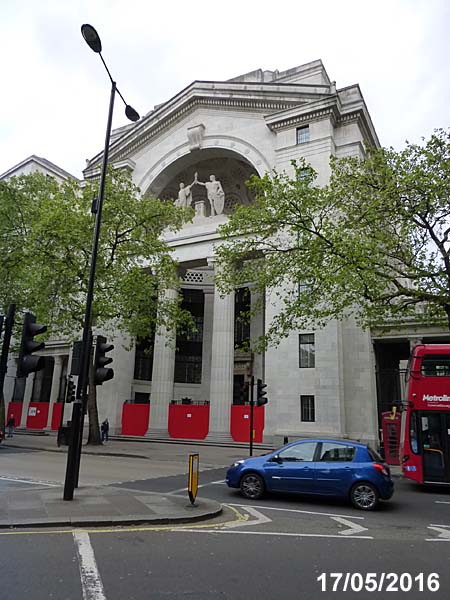The Central Block
features a portico with two male figures
standing above two impressive
columns.

The figures
that represent, "Great Britain
and America hold a
flaming torch and
a shield decorated
with the British
lion and the
American eagle. The
statues are made
of Indiana stone,
as it was
difficult to find
large enough
pieces of Portland
stone. ....

A Celtic altar stand
between the two figures and below it is
the inscription 'TO
THE FRIENDSHIP OF ENGLISH-SPEAKING
PEOPLES"

The reason why the
BBC website has information on Bush
House is that it was once home to the
BBC World Service.
"Following an international trade
slump, and the retreat of companies
from London because of World War
Two, Bush House needed tenants. When
the Empire Service (as BBC World
Service was formerly known) was
bombed out of its original home at
200 Oxford Street, Bush House, with
its large offices and expansive
landings was the obvious candidate.
European services were re-located
there in 1940. (The rest of the BBC
Overseas Service arrived in the late
1950s). But Bush House wasn't
immune from the bombers, suffering a
hit to the front of the building.
The statue representing
America lost its left arm. It was
only in 1970 that there was a plan
for restoration, when an American,
visiting his daughter at the London
School of Economics, saw the damaged
statue. He worked for the
Indiana Limestone Company and
persuaded the company to send a new
arm and a stonemason to attach it,
in time for the Silver Jubilee
celebrations of Elizabeth II in
1977. ...
Over the years all the BBC's
foreign language services gradually
invaded Bush House, penetrating each
wing in turn."



